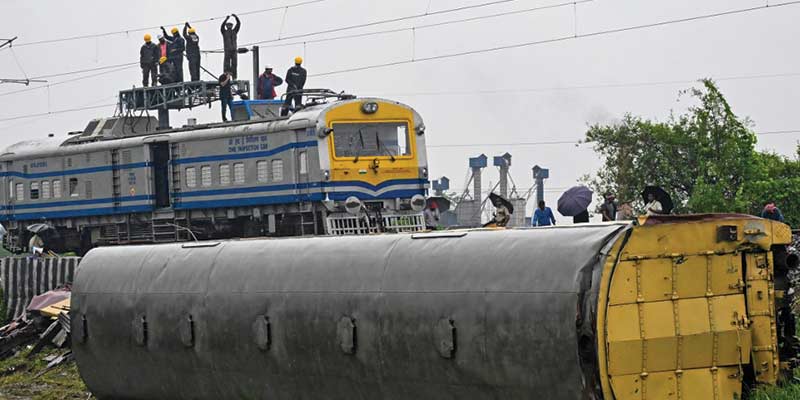- India
- Jun 18
- Kevin Savio Antony
What is Kavach system for railways?
• At least 10 people were killed and 41 injured after a goods train rammed into the stationary Sealdah-bound Kanchanjunga Express in West Bengal’s Darjeeling district on June 17.
• This tragedy has underscored the urgent need for the Kavach anti-collision system to be installed across all railway routes nationwide.
• The Kavach system, an Indian-developed technology designed to prevent train collisions, has not been installed on the tracks in Darjeeling, where the Kanchanjunga Express accident occurred.
• Although the Indian rail network spans over 100,000 kilometers, the anti-collision system is currently only implemented on approximately 1,500 kilometers of tracks.
What is the Kavach system?
• The Kavach is an Automatic Train Protection (ATP) system developed indigenously by the Research Design and Standards Organisation (RDSO) in collaboration with the Indian industry.
• Trials were conducted by the South-Central Railway to enhance safety in train operations across Indian Railways.
• It is a state-of-the-art electronic system meeting Safety Integrity Level-4 (SIL-4) standards.
• Kavach prevents trains from passing a red signal, indicating danger, and avoids collisions.
• It automatically activates the train’s braking system if the driver fails to adhere to speed restrictions.
• The system prevents collisions between two locomotives equipped with functional Kavach systems.
• It relays SoS messages during emergency situations.
• Features centralised live monitoring of train movements through the Network Monitor System.
• Kavach is one of the most cost-effective, SIL-4 certified technologies, with an error probability of 1 in 10,000 years.
How does Kavach work on railway systems?
• The Traffic Collision Avoidance System (TCAS) utilises equipment on board the locomotive and transmission towers at stations, connected with Radio Frequency Identification (RFID) tags.
• This setup facilitates two-way communication between the station master and the loco-pilot, allowing the conveyance of emergency messages.
• An instrument panel inside the cabin informs the loco-pilot of signals and permissible speeds in advance, without the need for visual sighting.
• If a red signal is passed and two trains are on a collision course, the system automatically applies the brakes.
• The system also activates a hooter when approaching a level crossing, which is particularly helpful during foggy conditions with low visibility.
Where has Kavach been implemented?
• In February 2024, Railway Minister Ashwini Vaishnaw told the Rajya Sabha that Kavach has been implemented on 1,465 route kilometers and 139 locomotives, including Electric Multiple Unit (EMU) rakes, primarily within the South Central Railway network.
• He also informed the Upper House that tenders have been awarded for deploying Kavach on the Delhi-Mumbai and Delhi-Howrah corridors, covering about 3,000 route kilometers.
• Additionally, significant progress has been made in installing necessary infrastructure, with 3,040 kilometers of optical fiber cable laid and 269 telecommunication towers erected.
(The author is a trainer for Civil Services aspirants.)


